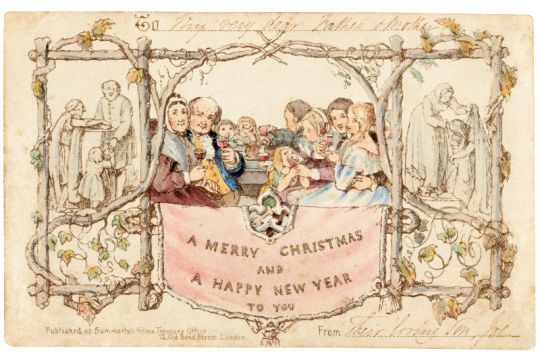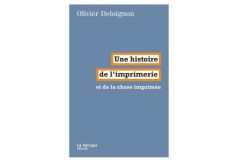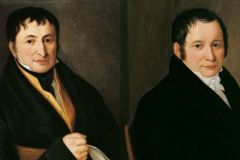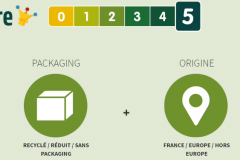The first greeting cards celebrated Christmas before anything else. They were sent during Advent to celebrate the day of Christ's birth and to present his wishes for the New Year. The very first commercial card was born in England in 1843.
One of the rare copies of this very first Christmas card was put on sale last December by the English company Christies. And it seduced the audience: estimated between 5?000 and 8?000 GBP (5?500 and 8?900 euros), the card, accompanied by its signed red ink print, went on sale at 13?750 GBP (about 15?200 euros) on 9 December 2020. However, it did not break the sales record. In 2001, another copy went to 22?500 GBP (25?000 euros).

This Christmas card was designed by Henry Cole. Henry Cole was a man of many passions who contributed to many innovations in business and education. For example, he worked on England's first postal system. He was also director of the London National Art Museum Victoria and Albert Museum, and also worked as an industrial designer and youth writer under the pseudonym Felix Summerly.
He came up with the idea for the Christmas card, when overwhelmed by the number of letters he had to send for Christmas, he looked for a way to send his greetings quickly to all his acquaintances. He then called upon his friend the painter John Callcott Horsley and edited this Christmas card, under the name Felix Summerly.
This 82 x 130 mm card features a lithographed illustration of a family toasting the health of their absent friend, the recipient of the card, with the inscription "A Merry Christmas and a Happy New Year to you". This central hand-coloured drawing is surrounded by black and white scenes depicting acts of charity.
It would have been printed in about 1,000 copies. The maps that Henry Cole did not use were put on sale. At a shilling a piece, too expensive at the time, they did not meet with the expected commercial success. Only 21 copies of this print would remain.
At the time, this card was controversial because it depicted a child drinking wine. It was not until 1848 that the second Christmas card, designed by artist William Maw Egley, appeared. They did not become popular until the 1860s.















